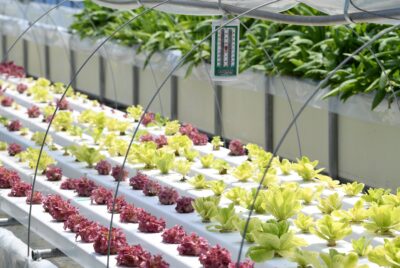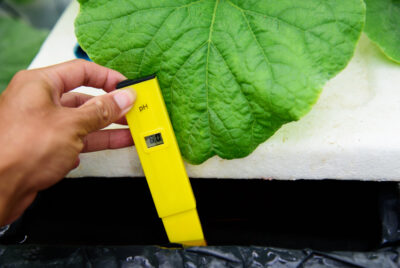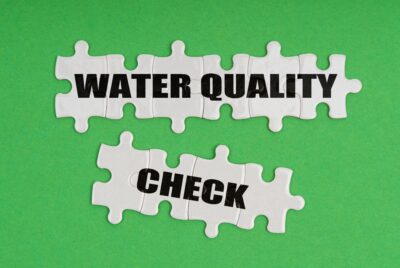Hydroponics vs Aeroponics
We may earn a commision from purchases made using our links. Please see our disclosure to learn more.
Hydroponics vs Aeroponics.
As an enthusiast and advisor in the hydroponics niche, I am often asked about the differences between hydroponics and aeroponics. Both these cultivation methods offer unique benefits and have their own set of considerations. In this article, Hydroponics vs Aeroponics, I will provide helpful suggestions and reasons for choosing between the two.
Introduction
Hydroponics and aeroponics are innovative soilless cultivation techniques that have gained significant popularity in recent years. These methods allow plants to grow in nutrient-rich solutions without the use of traditional soil. Instead, they rely on different mediums to provide support and deliver hydroponic fertilizer to the plant’s root systems. While they share similarities, there are distinct differences between hydroponics and aeroponics.
What is Hydroponics?
Hydroponics is a method of growing plants without soil, where the plant roots are submerged in a nutrient-rich water solution. The roots can be supported by various materials such as perlite, vermiculite, or coconut coir. The hydroponic fertilizer solution is carefully monitored and adjusted to provide optimal conditions for plant growth. Hydroponics offers precise control over nutrient delivery, water usage, and environmental factors like pH and temperature.
What is Aeroponics?
Aeroponics is a high-tech variation of hydroponics that uses a misting system to deliver hydroponic fertilizer directly to the plant roots. Instead of being submerged in a nutrient solution, the plant roots hang in the air, allowing them to absorb moisture and nutrients from the fine mist sprayed at regular intervals. This method promotes faster growth rates and improved nutrient absorption due to the increased oxygenation of the root system.
Comparison of Hydroponics vs Aeroponics
When deciding between hydroponics and aeroponics, it’s important to consider various factors that can influence your choice. Let’s explore some of the key points of comparison:
Nutrient Delivery and Oxygenation
Both hydroponics and aeroponics excel in delivering hydroponic fertilizer directly to plant roots. However, aeroponics provides superior oxygenation due to the fine mist that surrounds the roots, allowing for increased hydroponic fertilizer uptake and accelerated growth. Hydroponics, on the other hand, requires a well-maintained nutrient solution to ensure plants receive adequate nourishment. Both systems can benefit from the addition of a hydroponic water chiller to maintain correct temperatures for optimal growth.
Water Efficiency
Aeroponics is known for its exceptional water efficiency, as the misting system uses minimal amounts of water compared to hydroponics. Hydroponic systems can consume more water due to the need for a larger nutrient solution reservoir and the potential for evaporation. If conserving water is a priority, aeroponics may be the preferred choice.
Complexity and Maintenance
Hydroponic systems tend to be relatively easier to set up and maintain compared to aeroponic systems. Hydroponics utilizes a simple nutrient solution and requires periodic monitoring and adjustment. On the other hand, aeroponics involves the use of specialized misting equipment and a higher level of technical expertise. The misting nozzles need to be cleaned regularly to prevent clogging and ensure proper nutrient delivery. If you’re a beginner or prefer a less complex setup, hydroponics might be more suitable.
Plant Support and Growth
In hydroponics, plants are supported by hydroponic growing mediums such as perlite or coconut coir, providing stability and anchorage for their root systems. Aeroponics, on the other hand, suspends the plants in the air, allowing the roots to dangle freely. This promotes robust root growth and enables better nutrient absorption. If you’re growing plants with delicate roots or prefer a system that allows for unrestricted root growth, aeroponics could be the way to go.
Energy Consumption
Aeroponic systems generally require more energy compared to hydroponics due to the operation of misting pumps and the need for a pressurized system. Hydroponics, on the other hand, can be set up with lower energy requirements. If energy efficiency is a concern or if you want to minimize your carbon footprint, hydroponics might be a more suitable choice.
Benefits of Hydroponics
- Precise control over nutrient delivery and pH levels
- Faster growth rates compared to traditional soil-based cultivation
- Efficient use of space by using large hydroponic flood tables which promotes higher crop yields
- Reduced risk of soil-borne diseases and pests
- Year-round cultivation in controlled environments
Benefits of Aeroponics
- Enhanced nutrient absorption and faster plant growth
- Maximum oxygenation of the root system
- Minimal water usage and high water efficiency
- Ideal for growing delicate or sensitive plants
- Suitable for vertical farming and limited space environments
Drawbacks of Hydroponics
- Potential for nutrient imbalances if not properly monitored
- Risk of system failures or power outages affecting plant health
- Initial setup costs can be higher compared to traditional soil gardening
- Dependence on artificial lighting for indoor cultivation
Drawbacks of Aeroponics
- Higher complexity and technical expertise are required for setup and maintenance
- Increased risk of clogged misting nozzles and system malfunctions
- More energy consumption compared to hydroponics
- Initial setup costs can be higher than hydroponics
Hydroponics vs Aeroponics: Choosing the Right System for You
Selecting the ideal system for your needs depends on various factors such as your level of expertise, available space, budget, and the specific plants you intend to grow. Here are some considerations to help you make an informed decision:
Experience Level:
If you’re a beginner or have limited experience with soilless cultivation, hydroponics might be a good starting point due to its simplicity and ease of maintenance.
Plant Type:
Consider the specific plants you want to grow. Some plants thrive in hydroponic systems, while others may benefit more from the misting environment provided by aeroponics. Both can benefit greatly from the addition of a Co2 generator.
Space Availability:
If you have limited space or are interested in vertical farming, aeroponics can be a space-efficient solution due to its ability to suspend plants in the air.
Water Conservation:
If conserving water is a priority, aeroponics offers superior water efficiency compared to hydroponics.
Budget:
Consider your budget for setup and maintenance. Hydroponics generally has lower initial costs, while aeroponics may require a higher investment due to specialized equipment.
Ultimately, the choice between hydroponics and aeroponics depends on your specific requirements and preferences.
Conclusion
In the realm of soilless cultivation, both hydroponics and aeroponics offer unique advantages and considerations. Hydroponics provides precise nutrient delivery, ease of maintenance, and overall simplicity, making it an excellent choice for beginners or those looking for a straightforward system. On the other hand, aeroponics offers accelerated plant growth, enhanced hydroponic fertilizer absorption, and remarkable water efficiency, making it ideal for advanced growers or those with a focus on maximizing yields in limited space.
When deciding on the battle, hydroponics vs aeroponics it’s crucial to evaluate factors such as nutrient delivery, which instruments and controllers you need for each system, water efficiency, complexity, plant support, energy consumption, and your specific needs. Consider your experience level, the types of plants you wish to grow, available space, budget, and your environmental impact goals.
Remember, both hydroponics and aeroponics have their own learning curves and maintenance requirements. It’s essential to research and understand the specific needs of the system you choose to ensure the best results for your plants.
FAQs
Which system is more cost-effective?
Generally, hydroponics tends to have lower initial costs, while aeroponics may require a higher investment due to specialized equipment and misting systems.
Are hydroponic and aeroponic systems suitable for all plants?
Both hydroponic and aeroponic systems can accommodate a wide range of plant species, including herbs, leafy greens, vegetables, and even flowering plants. However, certain plants may have specific preferences for either system. It’s important to research and understand the specific requirements of the plants you intend to grow to ensure their success in your chosen cultivation method.
Can I switch between hydroponics and aeroponics?
While it is possible to switch between hydroponics and aeroponics, it requires some adjustments and considerations. The switch may involve changes in nutrient delivery methods, adjustments in misting frequency and duration, and modifications to the plant support structure. It’s important to thoroughly research and plan before transitioning between the two systems to ensure a smooth transition and maintain plant health.
How often should I monitor the nutrient levels in hydroponics and aeroponics?
The frequency of monitoring may vary depending on factors such as plant growth stage, water temperature, and the specific nutrient solution used.
What is the water consumption difference between hydroponics and aeroponics?
Aeroponics is known for its exceptional water efficiency compared to hydroponics. The misting system in aeroponics uses minimal amounts of water due to its ability to deliver nutrients directly to the plant roots in a fine mist. Hydroponic systems, on the other hand, may consume more water due to the need for a larger nutrient solution reservoir and the potential for evaporation. If water conservation is a priority, aeroponics is a favorable option.





Comments are closed.